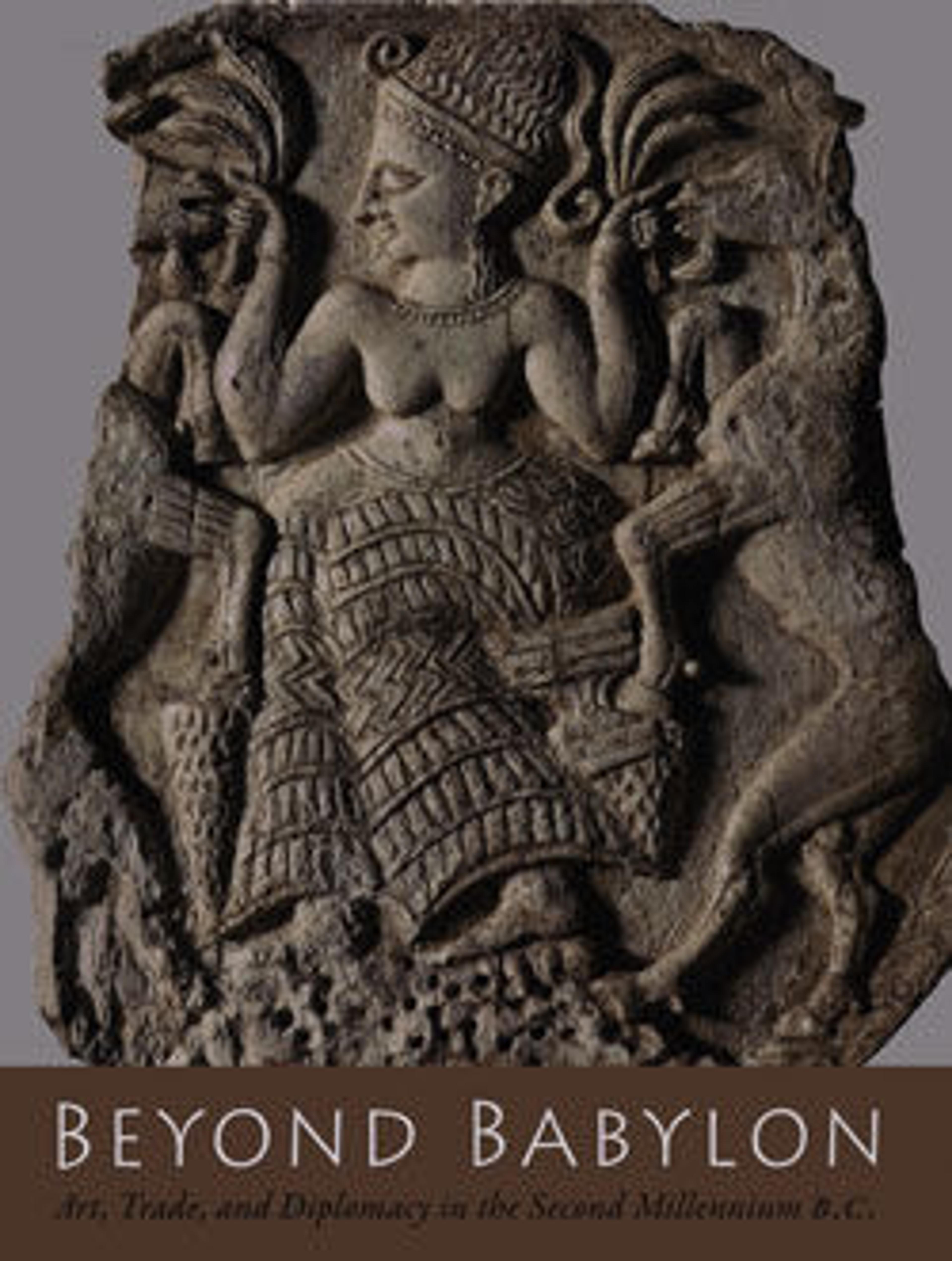Furniture element: bull-man with Hathor-style curls
This figure belongs to a group of carved ivories, mostly furniture elements, probably found at the site of a palace at Acemhöyük in central Anatolia. Most of the ivories depict imagery borrowed and transformed from Egyptian sources, but this piece takes the form of a bull-man, a typically Near Eastern supernatural creature combining a human head and frontal nude torso with the lower quarters of a bull shown in three-quarter view (note the tail visible at left along the curve of the flanks). The bull-man’s face resembles others from Acemhöyük, with its face-framing locks ending in curls, large nose, and wide eyes hollowed to receive inlays, now missing. He wears a belt and bracelets on both arms. The red color of the ivory indicates that iron oxides are present on the surface. Since the broken areas of the piece are also stained, it was probably not intentionally colored but picked up this stain as a result of contact with the soil in which it was buried. There are no traces of gilding. A hole at the top of the head allowed for attachment to another element.
Artwork Details
- Title: Furniture element: bull-man with Hathor-style curls
- Period: Middle Bronze Age–Old Assyrian Trading Colony
- Date: ca. 18th century BCE
- Geography: Anatolia, probably from Acemhöyük
- Culture: Old Assyrian Trading Colony
- Medium: Ivory (hippopotamus)
- Dimensions: 2 3/16 in. × 1 in. × 5/8 in. (5.5 × 2.5 × 1.6 cm)
- Credit Line: Gift of Mrs. George D. Pratt, in memory of George D. Pratt, 1936
- Object Number: 36.70.3
- Curatorial Department: Ancient West Asian Art
More Artwork
Research Resources
The Met provides unparalleled resources for research and welcomes an international community of students and scholars. The Met's Open Access API is where creators and researchers can connect to the The Met collection. Open Access data and public domain images are available for unrestricted commercial and noncommercial use without permission or fee.
To request images under copyright and other restrictions, please use this Image Request form.
Feedback
We continue to research and examine historical and cultural context for objects in The Met collection. If you have comments or questions about this object record, please contact us using the form below. The Museum looks forward to receiving your comments.
